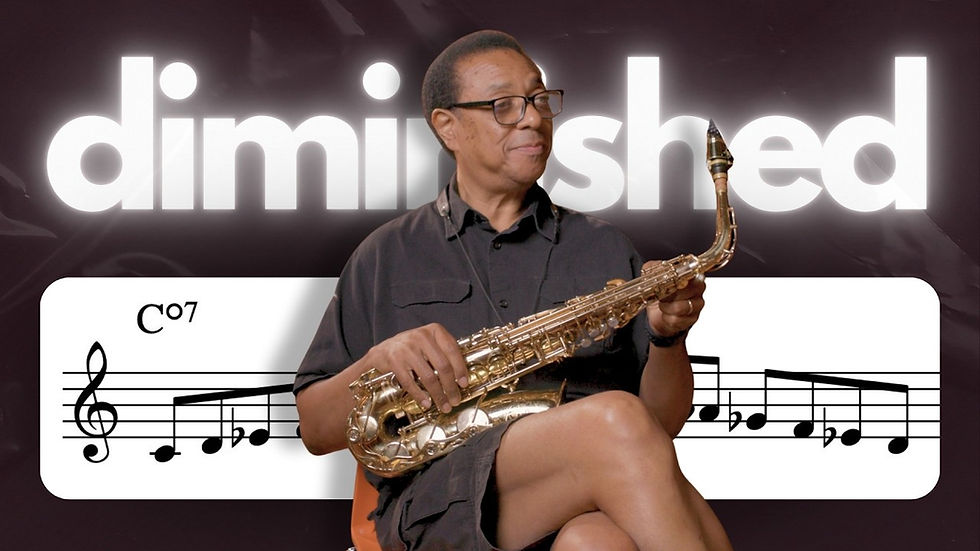How to Take a Phrase Through 12 Keys
- Jazz Lesson Videos

- Dec 9, 2024
- 3 min read
Whether you’re practicing a phrase, a lick, or a full tune, it’s important to know how to transpose. Not only is it good for you as a musician, but it can often come in handy at a gig.
Today we’re going to look at how you can take a phrase through all 12 keys, but first, make sure to check out Chad LB’s Jazz Language Video Course to go even further with this concept and more.
Now let’s get into it!
Contents
Understanding the piece
Beyond just reading what’s on the page, transposition requires a deeper understanding of how the piece works.

A good first step is to play the chords, either on a piano or a recording, so that you can hear the harmonic context. Our phrase is totally diatonic, meaning it’s all in one scale, in this case, the major scale.
Sing it first
To get the mind-body connection for everything we play, it’s important to be able to sing something before we play it.
If you don’t sing well, don’t worry, it’s not about that—you just want to be able to hit each pitch honestly.
Numbers game
Next up, we’ll use numbers to describe the function of each note in the scale. By numbering the scale degrees, we’re able to transcribe more fluidly than saying “half step up from F is F#...half step up from G is G#” etc. Knowing our major scale’s formula—WWHWWWH, we can easily move our phrase into a new key.
When Chad’s playing he’s ultimately never thinking in terms of numbers, but this was a key part of learning to bridge him to where he is now. By getting used to this process, you can get to the point where you instinctively know what comes next.
Here’s what it looks like when we number it:

We have 5, 3, 4, 6, 1 … then 3, 2, 1, 6. Then we have 7, 2, 4, 6, and we end on 5, 3.
With that in mind, try singing this phrase. If you need a little bit of guidance, check out our accompanying YouTube video, “How to Take a Phrase Through 12 Keys.”
To get your ear in the right place, start by playing through your Bb scale. Now looking at the numbers (knowing that half steps are between 3 and 4 and 7 and 1), you should be able to make your way through this.
Bit by bit
Our best way to approach this is to go piece by piece. Breaking this phrase into smaller pieces lets us not be too overwhelmed.

Looking at this first shape, we’ll go 5, 3, 4, 6, 1, 3. That’s a movement from I to an arpeggio up IVmaj7.

Our second shape has us walking down from 3, 2, 1, 6, as we prepare for that diatonic enclosure around the 7.

Then our last phrase goes from the 7 to 2, 4, 6, and ends on 5, 3.
With this in mind…let’s take it to a new key!
Here’s what it looks like in C major.

You’ll notice the shape and the intervals are all the same, it’s just the notes that have changed. That’s the magic of transposition—our numbering still works.
Go slowly and if you need to stop and restart that’s ok, too.
Now here it is in D-flat major.

And from here you can keep going through all 12 keys, feeling through each one as related to the previous.
Mastering licks in all 12 keys is going to give you so much more flexibility and it will help work your technique in keys where you may be less comfortable.
That’s all we have for today, if you want to hear how Chad works through this, make sure to check out our YouTube video, How to Take a Phrase Through 12 Keys, as well as our Jazz Language Video Course!
See you next time!



Comments